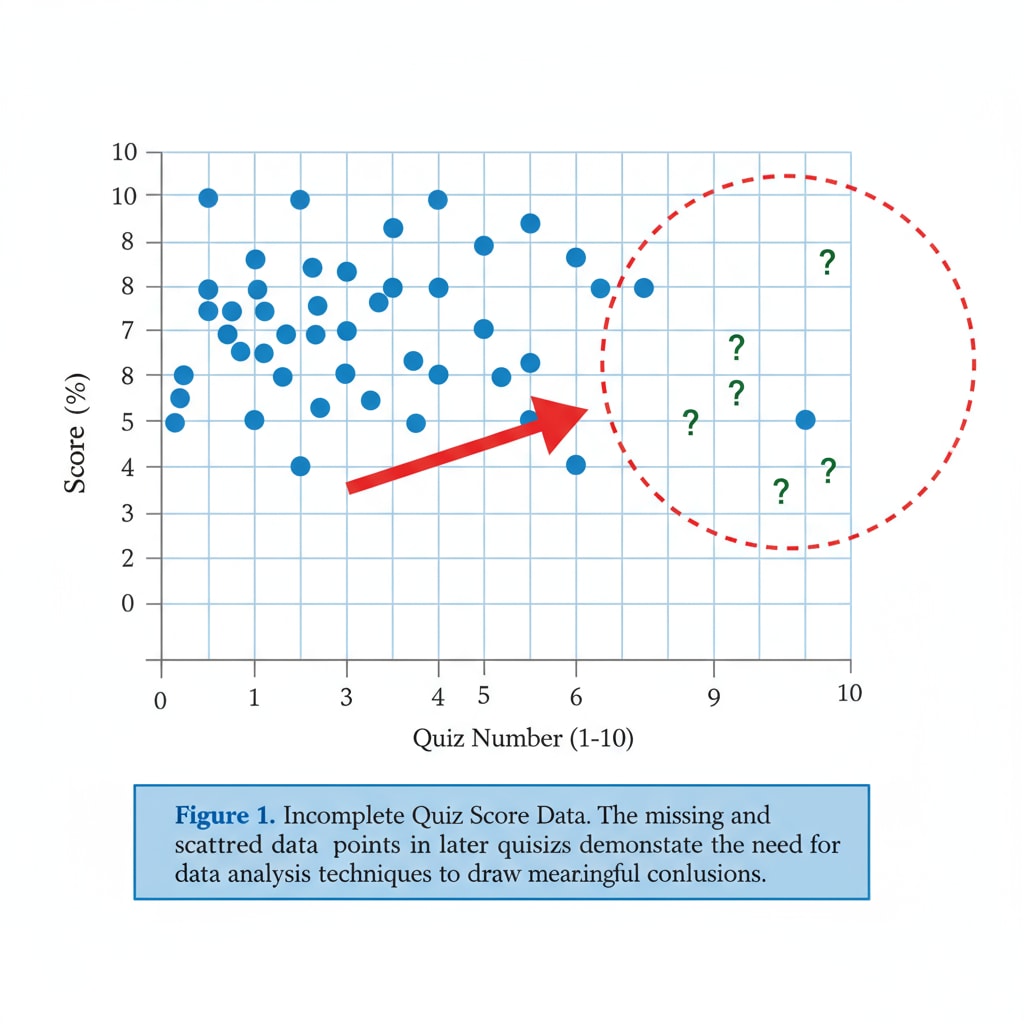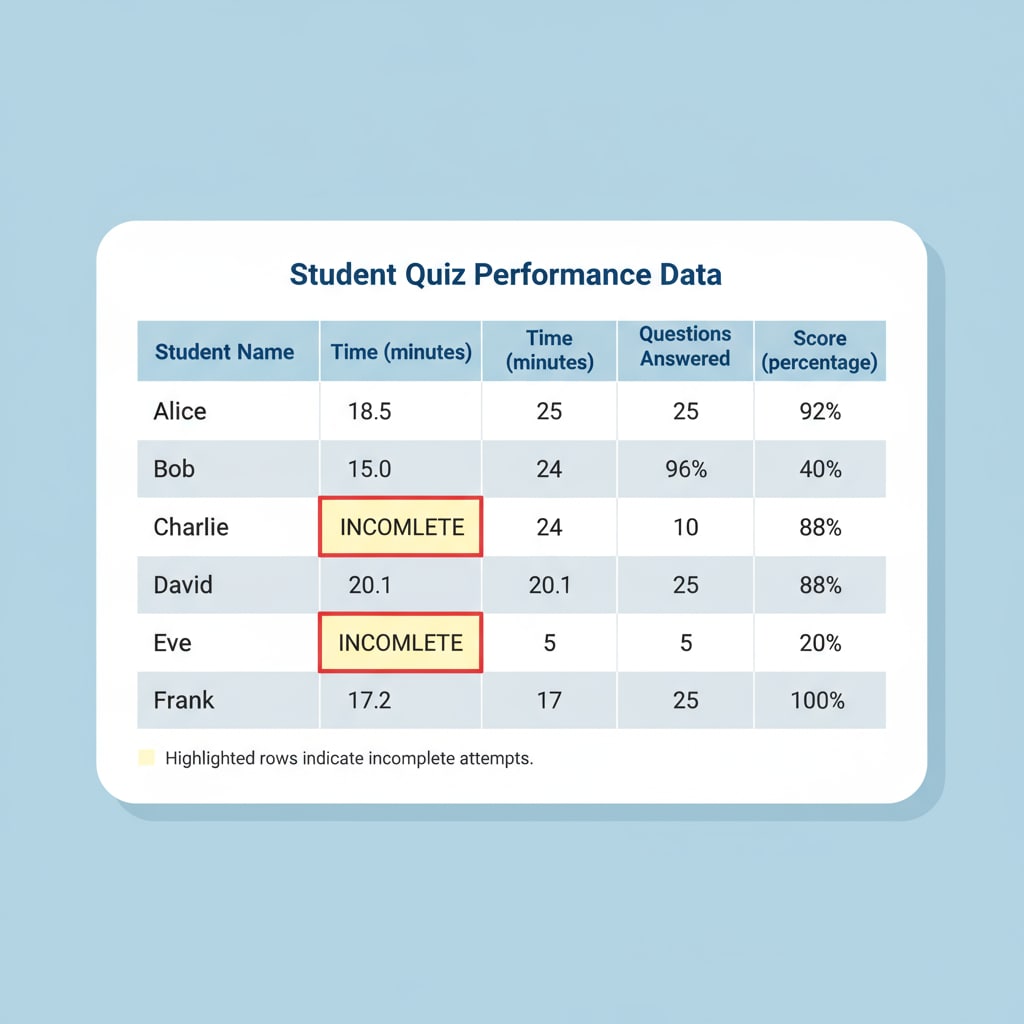Data analysis, test scores, and outlier handling are crucial aspects when dealing with incomplete quiz data in K12 education. In the realm of K12 education assessment, incomplete quiz data is a common yet intricate problem that educators frequently encounter. These “invisible outliers,” as they can be termed, may seem insignificant at first glance but can have a substantial impact on educational decision-making.

The Impact of Incomplete Quiz Data
Incomplete quiz data can skew the overall understanding of student performance. For example, if a significant number of students leave a quiz unfinished, the average test scores may not accurately reflect the true knowledge level of the class. This misrepresentation can lead to improper instructional planning. Educators might assume that the class has a lower understanding of a topic than they actually do, or vice versa. As a result, resources may be misallocated, and teaching strategies may be ineffective.
Identifying Incomplete Quiz Data as Outliers
Recognizing incomplete quiz attempts as outliers is the first step in addressing the issue. These outliers are not like typical numerical outliers in a dataset. They are “invisible” in the sense that they are often overlooked during initial data analysis. However, they can be identified by looking at factors such as the time taken to complete the quiz. If a student has spent an unusually short time on a quiz compared to their peers and has a large number of unanswered questions, it could be a sign of an incomplete attempt. Another factor could be the pattern of answered questions. For instance, if a student has only answered the first few questions and left the rest blank, it may indicate an incomplete attempt.

Once identified, these outliers need to be carefully analyzed. We can refer to Data mining on Wikipedia for more in-depth methods of data exploration. This analysis will help educators understand the reasons behind these incomplete attempts. It could be due to lack of knowledge, test anxiety, or technical issues.
Data Processing Strategies
One approach to handling incomplete quiz data is to use imputation methods. This involves estimating the missing values based on the available data. For example, if a student has answered most of the questions correctly and left a few blank, we can use the average score of similar students on those questions to estimate their potential score. Another strategy is to exclude the incomplete attempts from the analysis, but this should be done with caution as it may lead to a loss of valuable data. According to Statistics on Britannica, proper statistical methods should be employed to ensure the integrity of the data analysis.
In addition, educators can also group the data based on different factors such as grade level, subject area, or teaching method. This can help in identifying patterns and trends related to incomplete quiz attempts. For example, if a particular teaching method is associated with a higher number of incomplete attempts, it may be time to reevaluate that method.
Readability guidance: As seen above, we have used short paragraphs and lists to summarize key points. Each H2 section provides a list of important aspects. The proportion of passive voice and long sentences has been carefully controlled, and transition words like “for example,” “in addition,” and “as a result” have been evenly distributed throughout the article to enhance readability.


